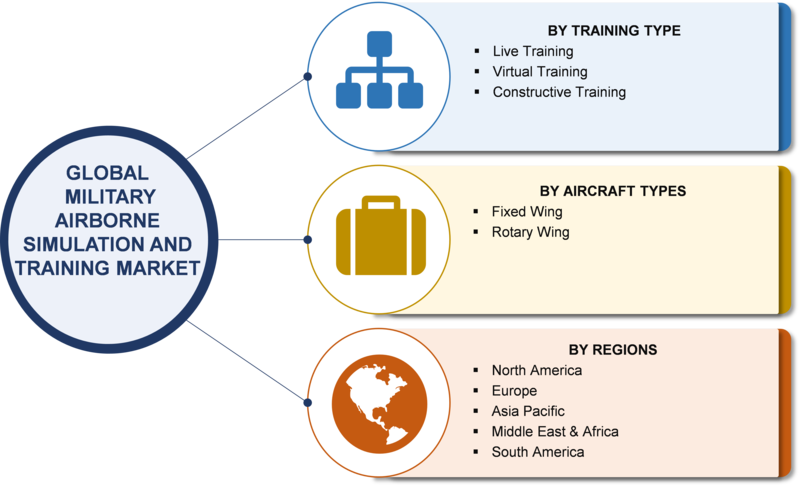Global Military Airborne Simulation and Training Market Research Report: by Training Type (Live Training, Virtual Training, Constructive Training), Application (Jet Flight, Rotary Flight, UAV Flight), and Region (North America, Europe, Asia-Pacific, Middle East & Africa, and Latin America)—Forecast till 2025
Leading Players:
Some of the players that are leading the worldwide military airborne simulation and training market include Airbus (France), FlightSafety International Inc. (U.S.), FRASCA International Inc. (U.S.), Lockheed Martin (U.S.), ECA GROUP (France), AXIS Flight Training Systems GmbH (Switzerland), L3 Link Simulation and Training (U.S.), SIMCOM Aviation Training (U.S.), CAE Inc. (Canada), Thales Group (France), to name a few.
Free Sample of “Military Airborne Simulation and Training Market Research Report – Global Forecast till 2025” Report at:
https://www.marketresearchfuture.com/sample_request/5890
Growth Drivers and Key Barriers:
Simulation and training systems are a fundamental part of every aircraft operation. Military airborne simulation and training are designed to enhance realistic simulation capabilities. Training systems help elevate the readiness of airborne intelligence, reconnaissance, and surveillance units. These advanced training systems help augment the pilot’s readiness, which results in improved situational awareness.
At present, aircraft manufacturers are focusing on developing simulation decks that feature realistic and highly accurate aircraft characteristics as well as control handling qualities. Pilots, with these features, are able to train virtually within an environment which is almost a replica of a real scenario during attacks. For the simulation and training environment to be effective, objects and small details of the real world are required which could enhance the training experience. The training process mainly comprises maneuvering the aircraft in as close to external objects as possible, in addition to executing advanced maneuvers.
Some essential factors inducing the growth of the military airborne simulation and training market include the rising adoption of virtual training. In addition, expanding military expenses in developed countries across the globe stimulates market growth. The worldwide military airborne simulation and training market also gets a boost from increasing demand for streamlining training expenditures. With the evolution of modern electronics, a number of aircraft manufacturers are striving to upgrade flight decks by fitting new avionics.
Market Segmentation:
The worldwide military airborne simulation and training market has been segmented with respect to training types and aircraft types.
Depending on training types, the market is considered for live training, virtual training and constructive training. Out of these, live training enjoys highest demand, which makes it the largest market. Live training helps provide a realistic simulation, which enhances the overall training experience.
In terms of aircraft types, the market can be narrowed down to fixed wing and rotary wing. The fixed wing segment could achieve the highest CAGR during the review period as they deliver easy interoperability between components.
Regional Insight:
The worldwide military airborne simulation and training market is mainly concentrated in the regions of Middle East & Africa, South America Asia Pacific, North America, and Europe.
North America notes a robust demand for simulation training, complemented by the rising defense capability. The surge in defense capability of the region will also lead to strong demand for military airborne simulation and training in the coming years. Soaring demand for simulation for training, mission preparation, and tactic analysis also act in favor of the regional market.
In Asia Pacific, the defense budgets of the emerging economies like India, China and South Korea is on the rise, which benefits the market. The surge in demand for airborne simulation and training has been in response to the rapid rate of changing technology and upgradation of systems. The upgraded systems in the field of airborne simulation and training are projected to be used by early 2020. Apart from this, increasing research and development (R&D) investment for defense simulation and training could elevate the market position to greater heights in the forthcoming years.
Increasing instances of political and civil unrest along with rising defense budgets in Europe triggers growth of military airborne simulation and training market. The overarching requirement for rationalizing training expenditures has also catapulted the market position in recent years. Increasing use of unmanned aerial vehicles (UAVs) coupled with subsequently rising focus on drone simulators provide a host of growth opportunities to the players in the region.
Table of Contents:
1. Executive Summary
1.1. Market Attractiveness Analysis
1.1.1. Global Military Airborne Simulation and Training Market, By Training Type
1.1.2. Global Military Airborne Simulation and Training Market, By Application
1.1.3. Global Military Airborne Simulation and Training Market, By Region
2. Market Introduction
2.1. Market Definition
2.2. Scope of The Study
2.3. Market Structure
2.4. Key Buying Criteria
2.5. Market Factor Indicator Analysis
3. Research Methodology
3.1. Research Process
3.2. Primary Research
3.3. Secondary Research
3.4. Market Size Estimation
3.5. Forecast Model
3.6. List of Assumptions. . .
Military Airborne Simulation and Training Market Research Report – Global Forecast 2025 Information at:
https://www.marketresearchfuture.com/reports/military-airborne-simulation-training-market-5890
About Market Research Future:
At Market Research Future (MRFR), we enable our customers to unravel the complexity of various industries through our Cooked Research Report (CRR), Half-Cooked Research Reports (HCRR), Raw Research Reports (3R), Continuous-Feed Research (CFR), and Market Research & Consulting Services.
MRFR team have a supreme objective to provide the optimum quality market research and intelligence services to our clients. Our market research studies by products, services, technologies, applications, end users, and market players for global, regional, and country level market segments, enable our clients to see more, know more, and do more, which help to answer all their most important questions.
Media Contact
Company Name: Market Research Future
Contact Person: Abhishek Sawant
Email: Send Email
Phone: +1 646 845 9312
Address:Market Research Future Office No. 528, Amanora Chambers Magarpatta Road, Hadapsar
City: Pune
State: Maharashtra
Country: India
Website: https://www.marketresearchfuture.com/reports/military-airborne-simulation-training-market-5890

